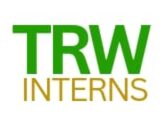10 Ways To Prevent Workplace Violence
Workplace violence is a potential safety and security risk that must command committed attention from every organization. Any credible act of bully, harassment, aggression, intimidation, assault, and attack carried out within the confines of a business place can pass this test. Workplace varies in nature and culture; so, does the threats of violence. Some business places may be prone to this threat than some others. For instance, the threat of workplace violence will be high in health and medical facility, hospitality and night club, production or manufacturing organizations. Same phenomenon may score low in corporate settings like financial offices, ports, county/government offices and other corporate arena. However, regardless of environment, threat of violence against persons holds water across board. Occupational safety which resonates closely with workplace violence was recently prioritized by the state of California in US through passing into law of SB 553 which now makes it mandatory for employers to have in place “an effective workplace violence prevention plan”. Hence, it becomes unlawful and illegal for an organization in California not to have in place a comprehensive and effective prevention plan for potential attacks in business settings. This move underscores the significance of putting the safety of world’s first assets (human resources) first and other resources next. Organizations have obligation to ensure safety of all persons at their work premises, regardless of the purpose of visit. To activate processes and communication towards fulfilling this obligation is the way to go for any business who truly prioritize occupational safety. Workplace violence is a very complex security threat, because it targets human resources which are key drivers to business success. David Burke’s act of extreme aggression on flight 1771 of Pacific Southwest Airlines in December 7, 1987 which led to the plane crash and the death of forty-three persons onboard is a classic example of a determined attacker in act of workplace violence. Here are five common types of workplace violence: Crime based: this occurs in active crime scene where the victim is not a primary target, however, got caught up in the web. Customer based: this is where a customer transfers aggression of frustration against a worker, a fellow customer or some others. Worker based: this occurs when a disgruntled or unstable worker goes berserk. The act may be against an employer, a fellow workers, or others. David Burke’s flight 1771 case was a good example of worker-based workplace violence. Owner-based: this obtains when the employer is the one attacking persons in the business premise. Such attack could be against a worker, a customer, a vendor, etc. Authority based: this type is done by persons who use their statutory authority to unleash violence on others in a workplace. Example is when on-duty law enforcement personnel carry out aggression against defenseless citizens. Redflags for workplace violence that must be taken seriously. Substance abuse Workplace toxicity Subtle act of bullying Uncontrollable emotion Fascination for violence Direct or indirect threats Obsessive acts of stalking Uncontrollable temperament Subtle violation of simple rules Subtle lack of respect for authority Sense of entitlement to “authority shield”. 10-Ways to prevent and mitigate workplace violence: Carry out risk assessment: this will enable the organization determine its exposure to this threat. Establish workplace violence prevention policy and plan: the policy as a statement of intent will set the tone and the plan will roll out follow-up reactions. Engage the workforce and communicate the policy to them: workers and other stakeholders must be informed of the position of the business about it. Activate security measures and controls: such controls should be embedded in physical and procedural security operation; e.g., surveillance, alarm, and visibility. Create incident reporting and response channel: there must be open channels for victims and observers to speak up about signs or occurrence of attack. Respond promptly: every perceived suspicion or real act of workplace violence must be visited with full wrath of the policy and plan. Provide support system: those who might suffer direct or indirect impact of attacks should receive necessary supports that are legally available as a duty of care. Ensure smart hire through background check: organization must know who they want to hire and the implications or otherwise of such hire. Maintain continuous training: beside onboarding inductions, organizations must continue to keep workers aware of its stance on the subject. Carry out random drug and alcohol test in the premise: such exercise will expose persons who may likely be a threat to the workplace. Threats of attack at business place is a security risk that must receive deserved attention and prioritization. Prevention is the best approach. When its early warning beams, it should not be taken for granted. As complex as it appears, this piece has highlighted some strategic approach to apply. ALSO READ: How Your Organization Should Prepare For Civil Disturbance


